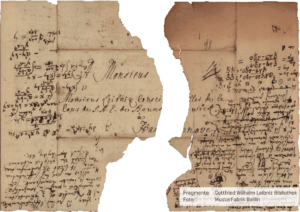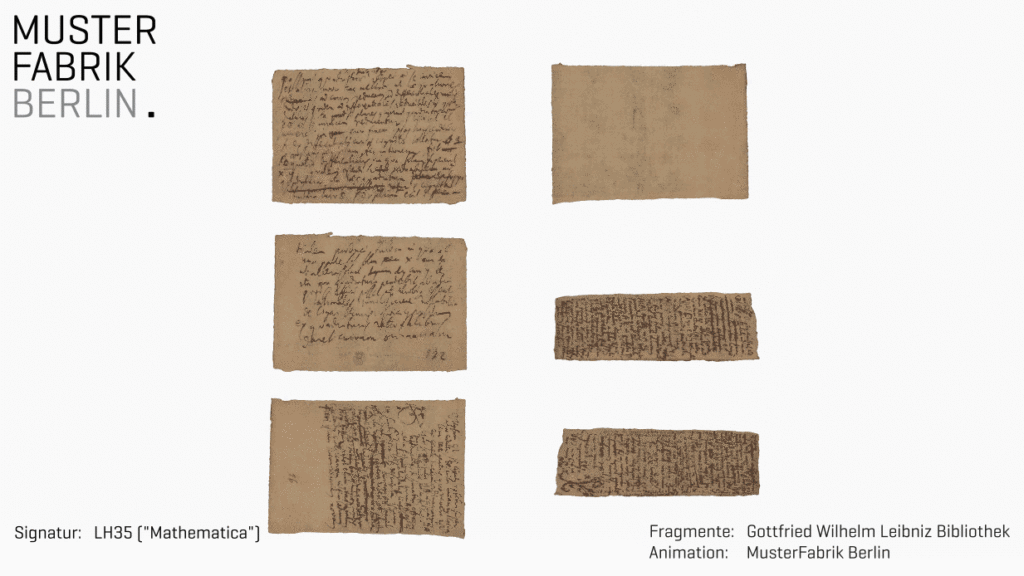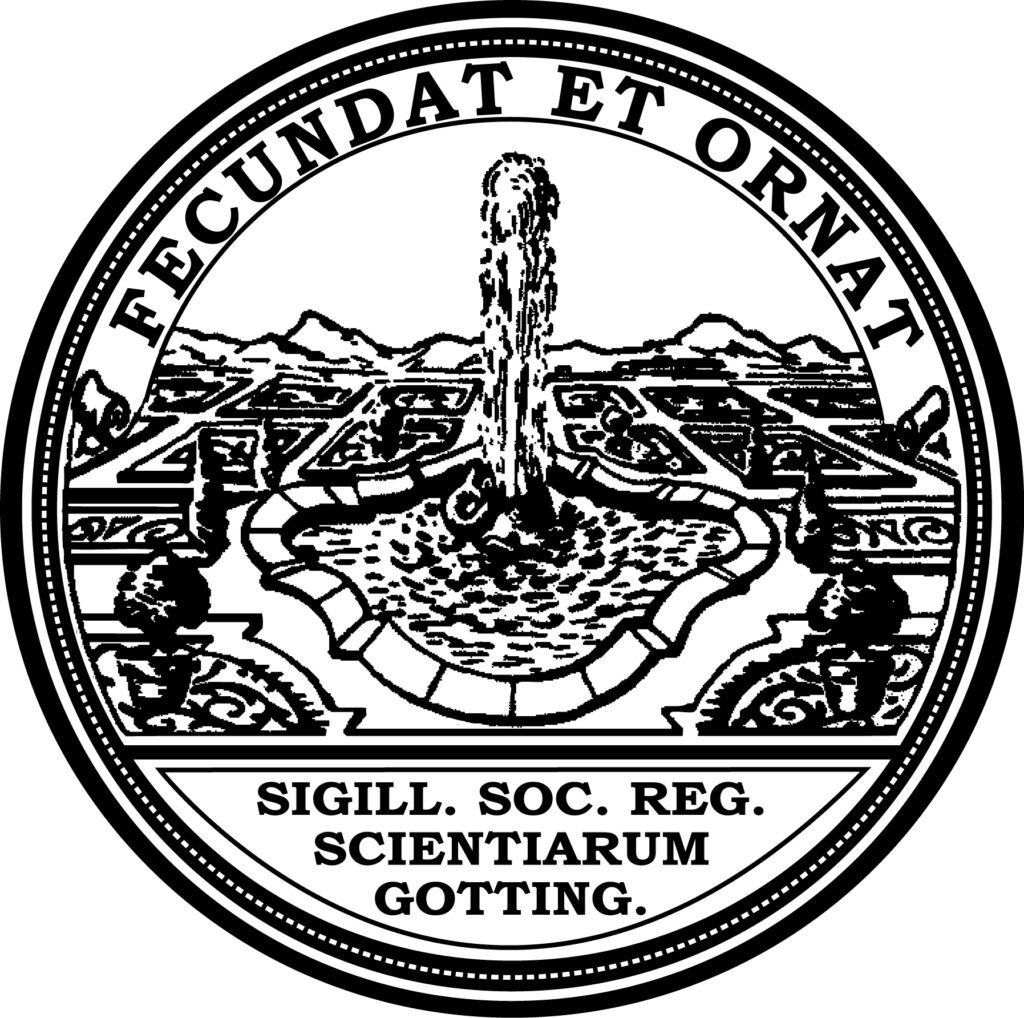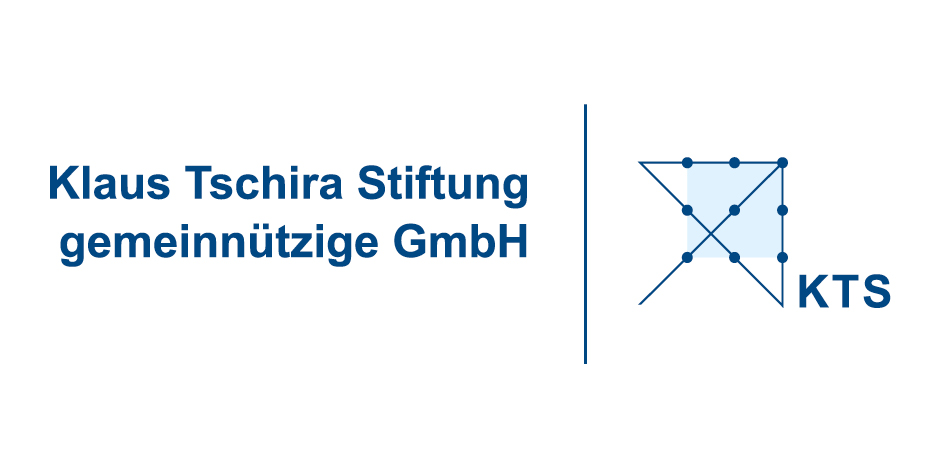Digital reconstruction of the records and notes of Gottfried Wilhelm Leibniz
Gottfried Wilhelm Leibniz is considered the universal genius of his time and was one of the most important philosophers and mathematicians of the late 17th and early 18th centuries. The digital reconstructions of the “Leibniz Manuscripts” show all letters and writings. His Œuvre includes not only philosophical, theological and political writings, he also enjoyed worldwide fame as a natural scientist, technician and mathematician. Without Leibniz, the technical development of the 21st century would be inconceivable, and his development of the binary number system in particular may be considered the foundation of today’s computer science.
The Estate of Gottfried Wilhelm Leibniz – The “Chaotic Paperwork” of a Universal Genius
Leibniz left behind approximately 100,000 written sheets, probably the largest bequest in world history. The international correspondence as part of the bequest was listed as a UNESCO World Documentary Heritage in 2008. His bequest, today almost completely preserved at Leibniz’s main place of activity, Hanover, in the Gottfried Wilhelm Leibniz Library (GWLB), is the most important material testimony to the world of letters of the early modern period and the Enlightenment.
The aim of the edition Gottfried Wilhelm Leibniz “Sämtliche Schriften und Briefe” is to make this bequest accessible in its entirety. In this context, the chronology of the writing of records and notes is of crucial importance. However, due to Leibniz’s practice of cutting up his manuscripts in order to organize his thoughts thematically, a large part of his writings has often survived only in the form of paper fragments and often undated notes, which makes the indexing of his estate considerably more difficult.
Digitally reassembling what has been cut up – The pilot phase of digital reconstruction
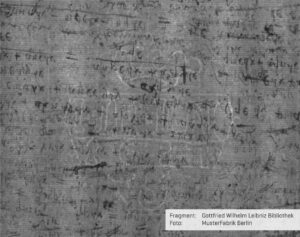
© MusterFabrik Berlin
To enable systematic reconstruction of related sheet fragments, MusterFabrik Berlin was commissioned in October 2015 to develop a prototype system for the digital reconstruction of the fragmented “Leibniz manuscripts” as part of a pilot project funded by the Klaus Tschira Foundation. The work included the development of an automated digitization unit for the double-sided digital capture of color and transmitted light images of the Leibniz holdings at the GWLB in Hanover, as well as the implementation of a computer-assisted assistance system for assembling the digitized materials in collaboration with the Fraunhofer Institute for Production Systems and Design Technology IPK.
After completion of the development work at the beginning of 2017, the digital reconstruction was tested in the MusterFabrik Berlin as part of the pilot project using the primarily mathematical fonts of the shelfmark group LH 35. This testing resulted in 67 reconstructions; compared to the 60 sheet fragments identified as belonging together by means of manual reconstruction in the period from 1976 to 2016 to date, an enormous success.
In the course of a so-called dynamic basic securing, the pool of manuscripts to be reconstructed was expanded by December 2017 to include the shelfmark groups LH 36-40 (Militaria – Physics, Mechanics, Chemistry and Natural History – Technica – Literary History – Societies, Archives and Libraries) and, in the period from January to April 2018, the shelfmark groups LH 4 (Philosophy) (financed by the NordLB Cultural Foundation) and LH 5 (Philology) (financed by the CULT Foundation Hanover) through third-party funding. As a result, a total of 145 successful reconstructions are now available, from which just over 100 datings (both initial datings and clarifications of previously vague datings and redatings) could be derived.
Further information on the project of digital reconstruction of the “Leibniz Manuscripts”
Our project partners:
Funded by:

